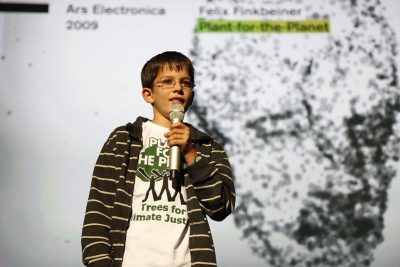Tracing Trump’s Trillion Trees
The president’s embrace of massive tree planting has a remarkable — and questionable — backstory
During last week’s State of the Union address, US President Donald Trump said:
To protect the environment, days ago I announced that the United States will join the One Trillion Trees Initiative, an ambitious effort to bring together government and private sector to plant new trees in America and all around the world.
Astute regular readers may recall that, in July, I flagged a new scientific article whose authors exaggerated its questionable claims regarding trees’ capacity to capture carbon dioxide and combat climate change. It turns out that a causal line can be drawn from that paper and its lead author, Prof. Tom Crowther of ETH Zurich, to Trump’s announcement (which notably does not say “climate change”).

But first, the story begins with a nine-year-old. In 2007, young Felix Finkbeiner of Germany was inspired by a class presentation on climate change to start Plant-for-the-Planet, a campaign to plant one million trees in each country. Four years later, the UN Environment Program transferred responsibility for its Billion Tree Campaign to Finkbeiner’s youth-led organization. In 2013, he contacted Prof. Crowther for the latter’s thoughts on trees’ potential to withdraw carbon dioxide from the atmosphere. In Finkbeiner’s words, Crowther reported “that we can restore one trillion trees. So we knew what the next step had to be. We had to transform the Billion Tree Campaign into the Trillion Tree Campaign.” By 2015, Crowther was touting the trillion trees in advance of the Copenhagen climate summit. And Finkbeiner joined Crowther’s research group as a PhD student in September 2018.
Crowther’s article that I highlighted here at Legal Planet, “The global tree restoration potential,” was published in Science in July 2019. (Finkbeiner is not among the authors, presumably because the work and most writing had been completed.) Its abstract originally stated that the article “highlights global tree restoration as our most effective climate change solution,” and in the accompanying press release, Crowther said “Our study shows clearly that forest restoration is the best climate change solution available today.” Both texts were later changed in response to criticism that included four sharply worded commentaries published by the journal. Among other things, these critics said that the article’s conclusions were “incorrect” and “approximately 5x too large.” Remarkably, Crowther and colleagues replied, “We did not suggest that tree restoration should be considered as the unique solution to climate change.”

In September, billionaire Marc Benioff tweeted links to the Crowther et al Science article and the press release, calling it “Incredible work.” (He had apparently learned of it from Al Gore.) The next month, Benioff met with Trump’s son-in-law, Jared Kushner, whom he already knew, to advocate the tree planting cause. At last month’s World Economic Forum last month, Benioff announced his own trillion trees effort, 1t.org. When doing so, the firm that he had founded — SalesForce — defended this endeavor by publishing an interview with Crowther. It was at the World Economic Forum that Pres. Trump said that the US would support Benioff’s trillion trees program. In Congress, the effort to enact the tree project into law is being led by Rep. Bruce Westerman (R-Arkansas), who (like Trump) doubts anthropogenic climate change and has a 1% lifetime score from the League of Conservation Voters.
To me, what’s most remarkable in this is Crowther’s reaction to Pres. Trump’s embrace of his “most effective climate change solution.” According to The New York Times, Crowther
cautioned that the full benefits would not be seen for about 100 years, when most of the new trees would reach full maturity. During that time, he said, the world needs to drive down fossil fuel emissions.
“If tree planting is just used as an excuse to avoid cutting greenhouse gas emissions or to further limit environmental protection, then it could be a real disaster,” said Dr. Crowther, who studies ecosystem ecology at ETH Zurich.
I suppose that there are two ways of looking at this. Perhaps if Crowther had used such measured language all along, then the questionable proposal of massive tree planting would not be embraced by climate change doubters as an apparent means to prevent more meaningful action. On the other hand, Crowther’s exaggerations have led some such opponents — including the most powerful person in the world — to take some action, which may be better than nothing.
Reader Comments
One Reply to “Tracing Trump’s Trillion Trees”
Comments are closed.







Always valuable to know the history of subjects of interest–excellent article, many thanks!